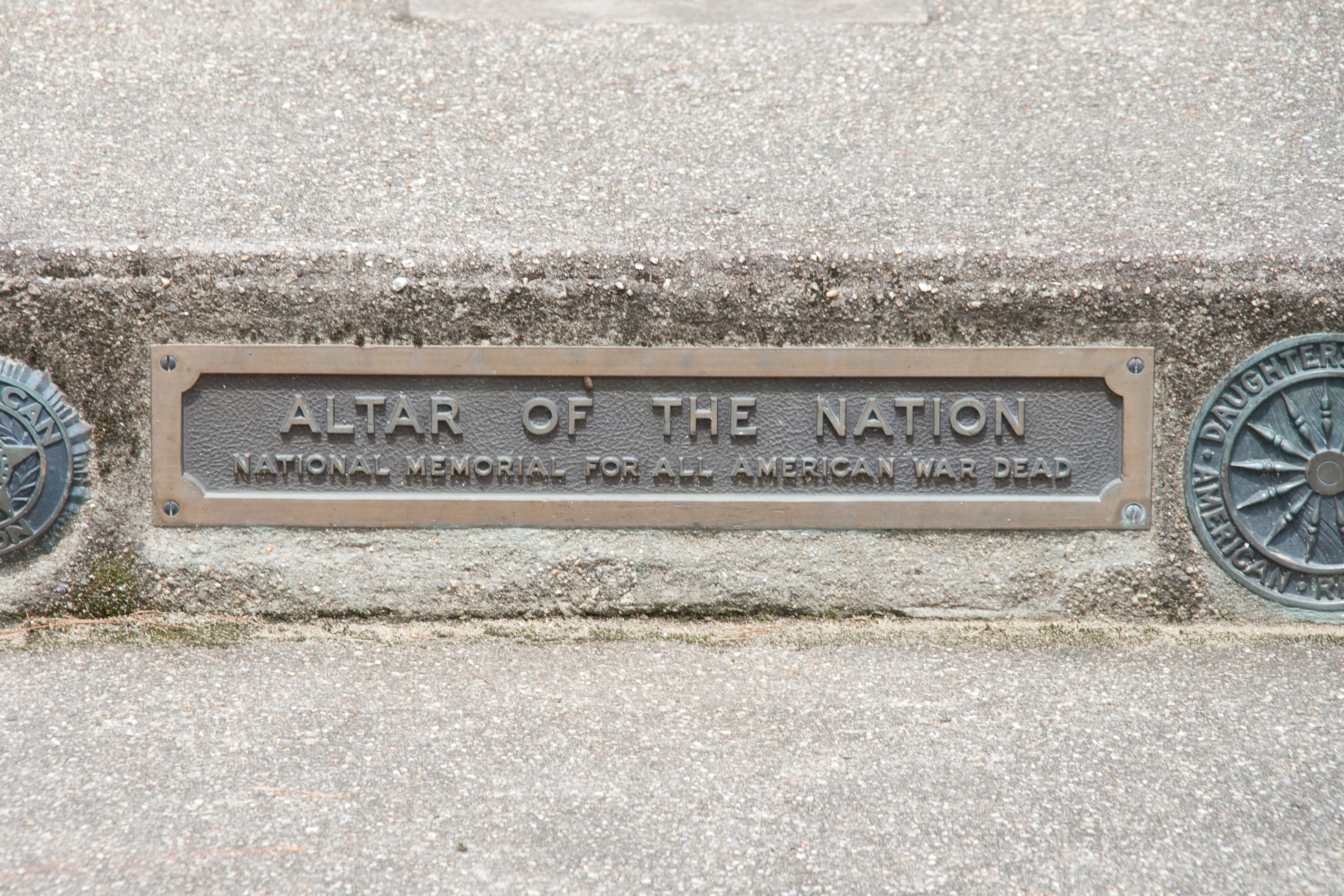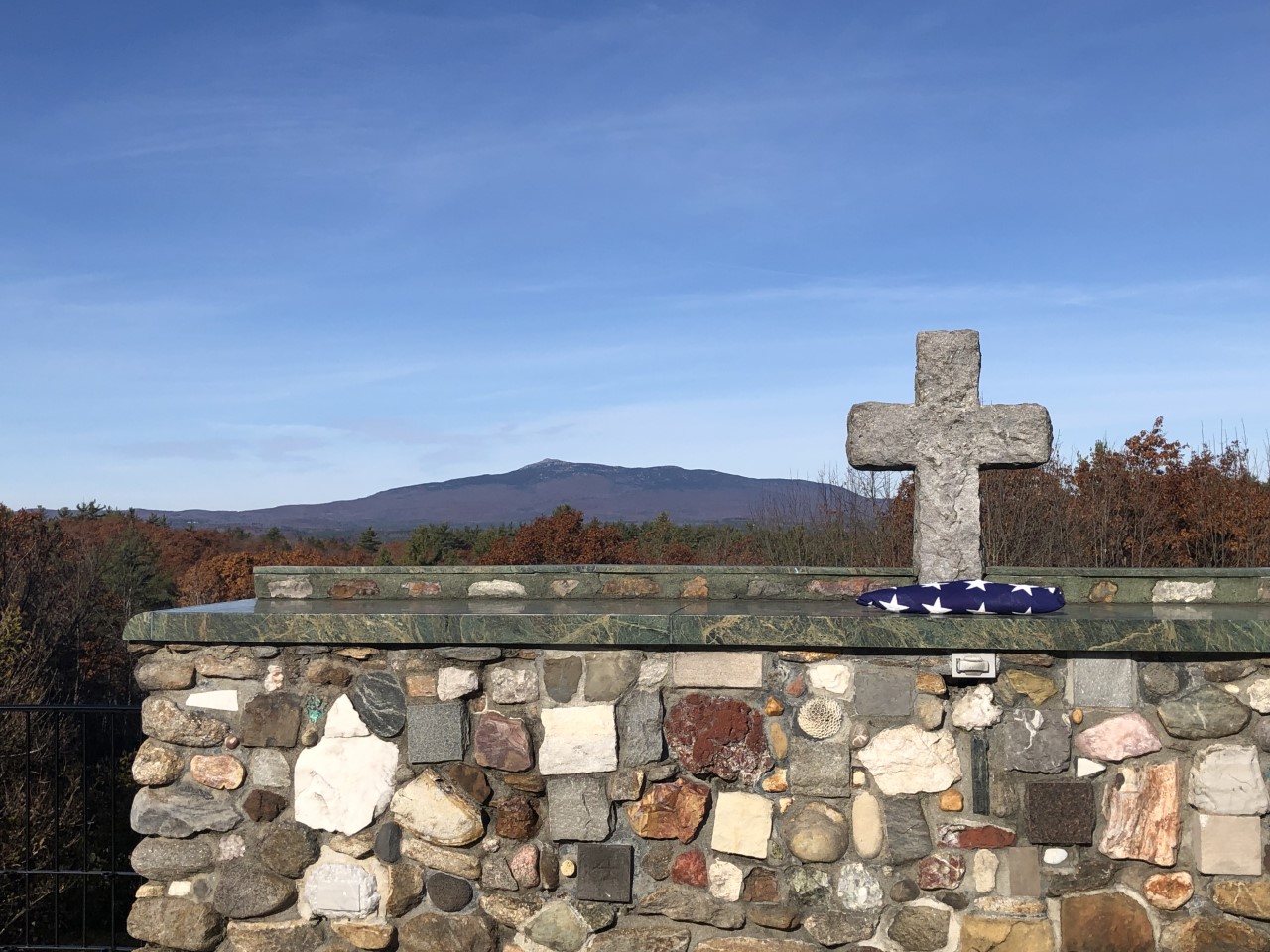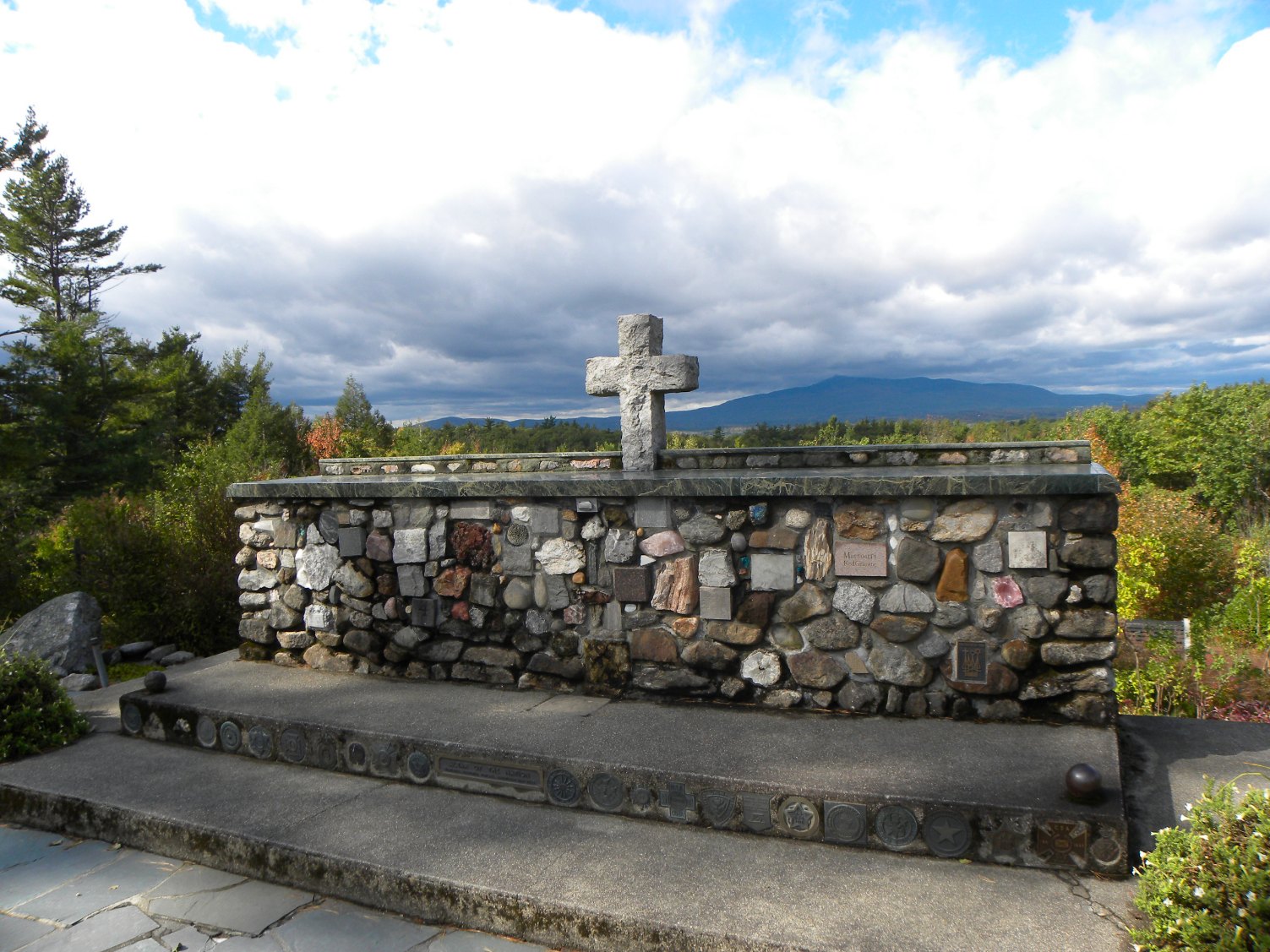The Altar of the Nation
Built in 1946 and recognized by Congress in 1957 as a National Memorial to American men and women who lost their lives in war.
The stones that make up the main body of the Altar come from all fifty states and from every United States President since Harry Truman. There is a stone from Plymouth, England where the Pilgrims left the Old World and one from Plymouth Rock, Massachusetts where they landed in the new. There are stones from the battlefields of Lexington, Concord, and Yorktown where the American Revolution began and ended. Three stones from the Parthenon in Athens and a stone from the ancient Colosseum in Rome are also embedded in the altar.
Stones have come from the homes, libraries, or grave sites of U.S. presidents including George Washington, Andrew Jackson, Franklin Roosevelt, Harry Truman, Lyndon Johnson, and Ronald Reagan. A volcanic rock from Little America in the Antarctic honors the famous explorer Admiral Richard E. Byrd. Numerous stones come from the battlefields of WWI and WWII in Europe, such as the one contributed by President Dwight D. Eisenhower that he took from Omaha Beach in Normandy, site of the D-Day invasion. There are tributes from the Pacific Theater of WWII with stones from Japan, the Coral Sea, and from the shores of Iwo Jima. There are stones from Korea, Vietnam, and Iraq. One of the more recent stones, donated by President George W. Bush, came from the Pentagon following the attack on America, September 11, 2001.
Three large slabs of “verde antique,” also known as “Maryland Green,” marble form the top of the Altar. The slabs weigh more than half a ton each. They come from a quarry in Maryland that straddles the Mason-Dixon line, the boundary separating the north and south during the Civil War. The slabs on the right and the left symbolize the North and the South and the one in the center symbolizes the joining of the two into one Union. Soil from Mt. Zion in Jerusalem is mixed into the mortar that binds the marble to the Altar.



Perhaps the most unusual stone is the one from Koblenz, Germany, the town where Sandy Sloane’s plane was shot down in 1944. In 1969 the mayor of Koblenz made a special trip to the Cathedral and presented a stone from the 600-year-old bridge over the Moselle River in Koblenz. The donation of the stone the accompanying service on October 14, 1969 symbolized the Cathedral’s ideals of friendship, peace, and brotherhood.
